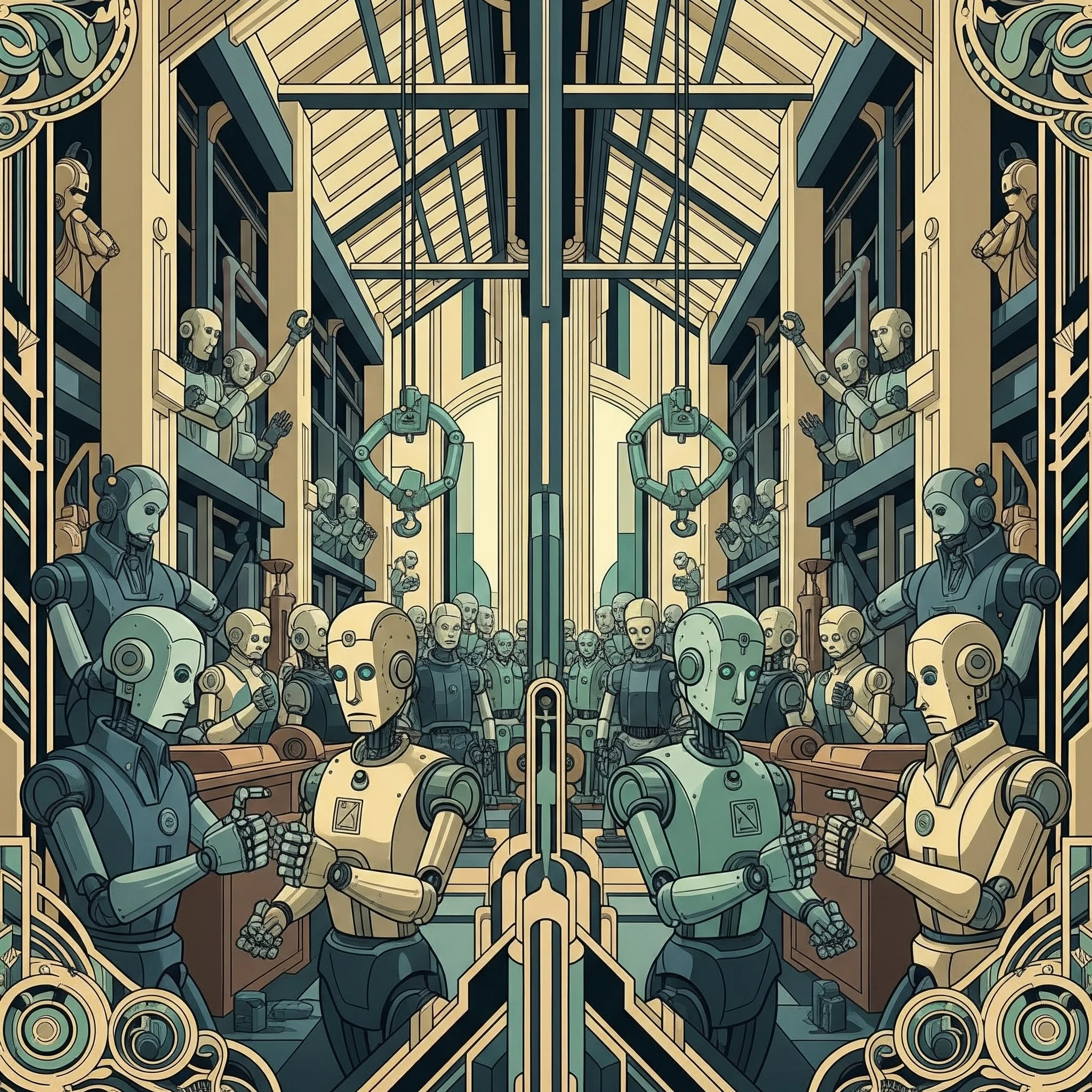Full Stack Robotics
Abstract
Maximize throughput through purpose-built robotics
Description
One could boil down past failures to the technology not being ready. While there’s some truth to that, it overlooks important nuances that should be considered to avoid the losses of false inflection points. From the customer’s perspective, there were three main limitations that created too much economic friction in the adoption flow:
Upfront investment – Excluding the most scaled operations (auto/aero), no one could justify a six- or seven-figure purchase price. Balance sheets and margin levels were too weak to weather a major capital outlay—especially from unproven startups with inherent survival risk. Hardware has now broadly commoditized, resulting in far more cost-accessible rigs. This cost compression, plus the extreme VC preference for recurring revenue, gave rise to the Robotics-as-a-Service (RaaS) business model, which largely mitigates this friction by transforming robotics budgets from CapEx to OpEx.
Integration costs – Setup time and environmental redesign were perhaps the biggest drivers of robotic startup deaths over the past 10 years. Required weeks (or months) of on-site setup could destroy ROI estimates and tax the energy and goodwill of the buyer. Past robotics systems lacked the abstraction layers needed to ensure turnkey solutions.
Downtime issues – Any operations leader will tell you that downtime is 50x more expensive than any marginal efficiency gain. Outside of the most engineered environments, any introduced variability could bring a system to a halt—anything from an abnormal part to a weak Ethernet connection.
The failures of the past have established a fairly clear roadmap for market entry. There are myriad areas that could be automated or enhanced, but the trick is finding uniquely asymmetric upside. As a result, I felt it more prudent to establish a mental model for which applications make more or less investment sense, rather than build a shortlist of predictions. Consideration factors include:
Environmental control – Despite the increase in adaptability, we’re still learning the limits of GenAI. All things equal, a more engineered or stable environment will result in faster training and lower downtime. The greatest automation success stories have come from settings where the entire environment was built around the robotic capability (e.g., auto production).
Safety risk – Failures and hallucinations will happen. If those setbacks result in safety concerns (human life, financial performance, or environmental impact), they create serious adoption friction.
Throughput unlock – Every automation pitch claims massive cost savings, but that’s only really true where there’s a demand chokepoint—either in required skill or raw human capability. In my opinion, this is the single most important factor in the list and my first filter when assessing opportunities. E-commerce pick-and-pack has been such a killer app in recent years precisely because it easily enabled 24/7 operation.
Ease of supervision – Despite recent advancements, interventions will still be needed, so the proximity and convenience of “pulling in” a skilled human matters. You can almost think of this as an apprenticeship model—at least for a time during system training. The more co-located a robot and human are in their daily execution, the less downtime and integration cost. This is why I think some of the seemingly obvious robotic applications have failed to take off (e.g., oil rig maintenance, subterranean mining exploration).
When applying these four filters, the most exciting applications are wet lab automation (bio or chemical), medical/pharmacy processing, and utility-scale solar installation. Fulfillment and warehouse automation remain interesting, but I fear the alpha there has dissipated. An alternative view is that the best bets are “reshoring leapfrogs”—industrial segments now being built from scratch in the West and able to leverage best practices from day one (i.e., no legacy replacement). Examples include semiconductors, carbon capture, and battery production/recycling.
Related Reading
Mobile Aloha - mobile, bi-manual robotic training
GOAT - universal navigation system
RT-X project - open source X-Embodiment collaboration
SpatialVLM - vision-language models with spatial reasoning capabilities
RT-1 - robotics transformer
Moravec’s paradox - an observation of the relative ease of computation vs. the difficulty of perception
Relevant Companies
Humanoid robotics - Boston Dynamics, 1X Technologies, Agility Robotics, Apptronik, Figure AI, Fourier Intelligence, Sanctuary AI
Quadruped robotics - Unitree Robotics, XPENG Robotics, Picknik, Swiss Mile
Vertically-focused robotics - Covariant (pick / pack) Monumental (brick laying), RobCo (pick / pack), Neptune Robotics (hull inspection / cleaning), Automata (lab automation)
